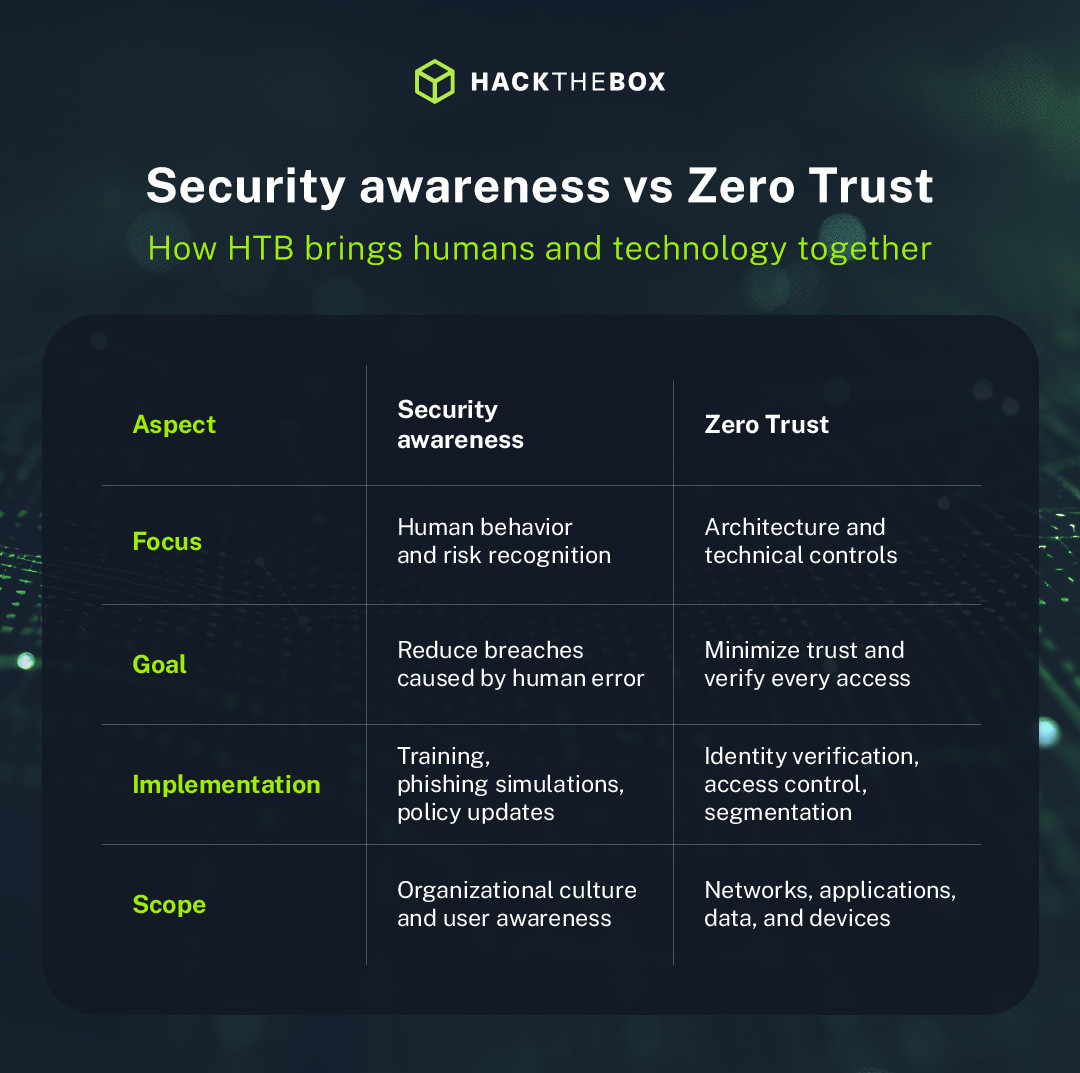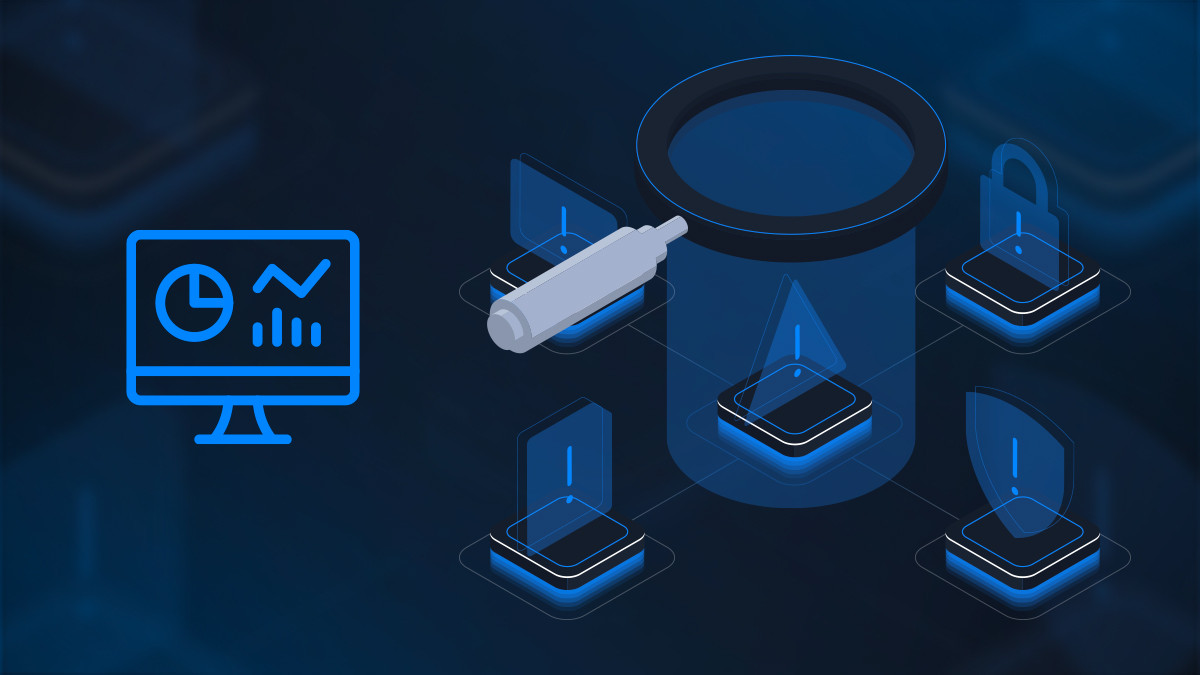Cyber Teams
Zero Trust: Why your tech stack isn’t enough (and humans are the real key)
Zero Trust isn’t just a tech strategy. It’s a human one. Learn why cybersecurity readiness depends on mindset, skills, and culture as much as tools and frameworks.

diskordia,
Nov 13
2025
When John Kindervag first came up with ‘Zero Trust’ back in 2010, the cybersecurity world treated it a bit like a fad diet. “Never trust, always verify” sounded exhausting.
Fifteen years later, Kindervag’s the one having the last laugh; Zero Trust isn’t just mainstream, it’s become a non-negotiable for any defense strategy worth its salt. But here’s the uneasy truth: too many organizations still think Zero Trust can be bought, installed, and automated away. Sorry, you can’t.
Because no matter how advanced your tech stack is, success still depends on human skill, mindset, and execution. In this article, we’ll take a closer look at the human side of Zero Trust, and what you can do to make it work.
Table of Contents
We’re forgetting that people are…people
Zero Trust has something of a reputation for being an architecture issue; something to be solved with identity access management, network segmentation, and the latest monitoring tools. But frameworks don’t implement themselves.
Without skilled professionals who get the “why” and “how,” Zero Trust becomes just another half-configured buzzword. You can’t enforce least privilege if no one knows how to assess privilege. You can’t verify everything if your team doesn’t know what “everything” is.
Learn how Threat Range can help on your Zero Trust journey
Think of the Millennium Falcon. It’s got all the hyperdrives and deflector shields you could hope for, but without Han and Chewie at the helm, it’s just a worn-out junker bopping around space.

Security awareness vs. Zero Trust
Security awareness and Zero Trust often get lumped together, used interchangeably, but they’re actually more like different creatures that peacefully co-exist in the same habitat:

TL;DR: Security awareness is about how you teach people to act securely. Zero Trust is how you enforce that teaching through design and proper verification. You can’t have one without the other.
Why human skills are your Zero Trust engine
1. Moving from “trust but verify” to “verify everything”
Zero Trust isn’t just a technical pivot—it’s a cultural one, too. It calls for teams to ditch the old assumption that users, devices, or networks inside the perimeter are safe. That’s as much a psychological jump as it is a strategic one.
Leaders have to help teams reframe what they mean by “secure”. It’s no longer about building taller walls, but assuming the enemy’s already inside and designing systems (and mindsets) resilient enough to adapt.
2. Communication and collaboration
Zero Trust initiatives tend to fall at the human hurdle, not the technical one. A disconnect between IT, security, and business units creates confusion and resistance.
Adoption depends on clear communication: translating the jargon, aligning priorities, and helping people click with why it matters. It’s the difference between telling your team, “We’re implementing Zero Trust controls,” and saying, “We’re making sure no attacker can exploit trust gaps in how we work.”
3. Training and culture
You can’t operate on what you don’t understand. For Zero Trust to work, everyone—from CISOs to interns on their first day—needs to commit to continuous upskilling. That includes knowing how to respond to MFA prompts, respecting least-privilege access, and reporting anomalies without hesitation.
And it’s not a one-time thing. Zero Trust is an ongoing journey that thrives on continuous education, simulation, and feedback.
4. Risk management, but make it human
Generally speaking, technology doesn’t fail; humans do. That’s why the most impactful Zero Trust programs start by analyzing how people interact with systems, where human error introduces risk, and how to build walls that protect against it.
When you look at humans as an integrated (and integral) part of your security architecture—rather than just faceless users clicking “allow”—you can build true resilience.
How HTB fits into your Zero Trust journey
HTB is the perfect partner for exactly this kind of transformation. While others might preach “never trust, always verify,” we give your teams the ideal place to practice it.
-
Hands-on, skills-based training: Through defensive labs—Sherlocks and LetsDefend labs in particular—teams learn to think like attackers and defenders across real-world Zero Trust scenarios.
-
Continuous learning: From phishing simulations to access control labs, HTB keeps your organization sharp as threats evolve.
-
Culture building: Zero Trust isn’t about paranoia; it’s about shared responsibility. HTB’s gamified platform fosters collaboration, competition, and the kind of security mindset that sticks through real-world simulations (E.g. Threat Range).
Because at the end of the day, Zero Trust isn’t a product you install and update, but rather a skillset you build and hone over time.
Final thoughts on Zero Trust and human skills
Zero Trust is perhaps the cybersecurity buzzword of the decade. But ultimately, it all boils down to human trust. The frameworks, policies, and AI-driven systems in place will only work when the people behind them know what they’re doing and why they’re doing it.
Invest in your people, or your Zero Trust dream will stay just that. And remember: the call is always coming from inside the network.













